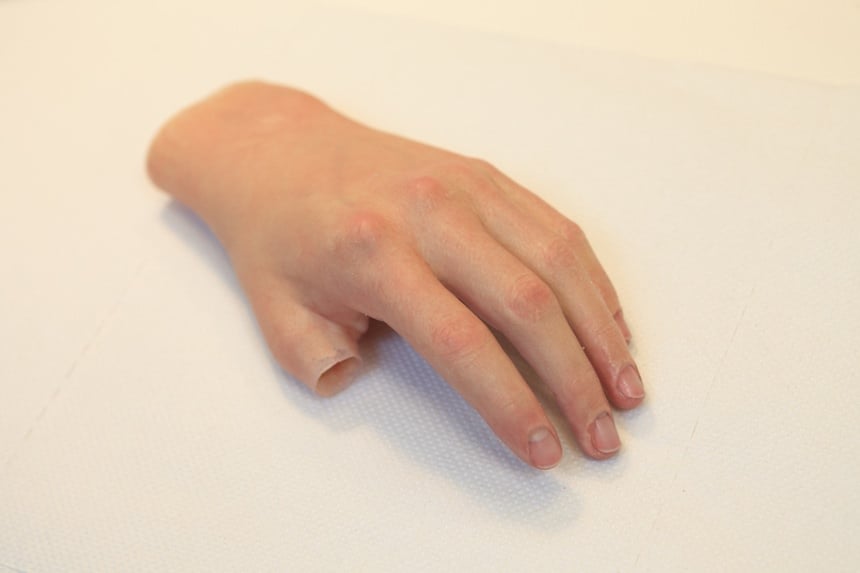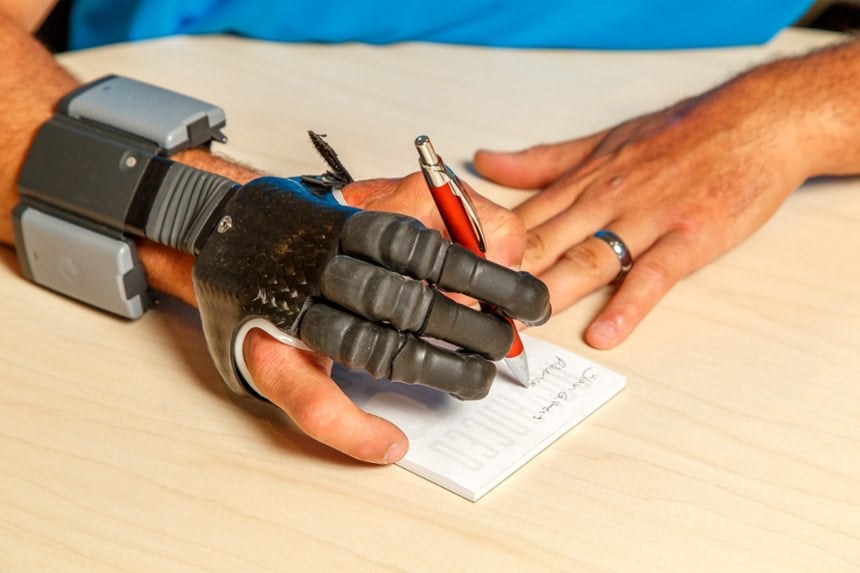Partial hand loss comprises about 90 percent of all upper extremity amputations and may involve the loss of one or more digits. Prostheses for this level of limb absence have historically been simple opposition designs that utilize movements from the person’s remaining thumb or fingers for grasping against a fixed prosthetic platform. However, a series of recent technological advances have led to the development of smaller, more robust components that are steadily improving body-powered and electrically powered designs.
As with every upper limb amputation, or difference, there are six prosthetic options for partial hand prosthetic rehabilitation:
- No prosthesis
- Passive prosthesis
- Body-powered prosthesis
- Electrically powered prosthesis
- Activity-specific prosthesis
- Hybrid prosthesis






















